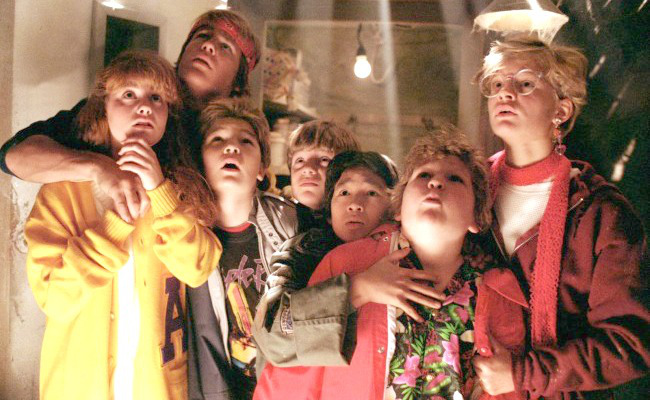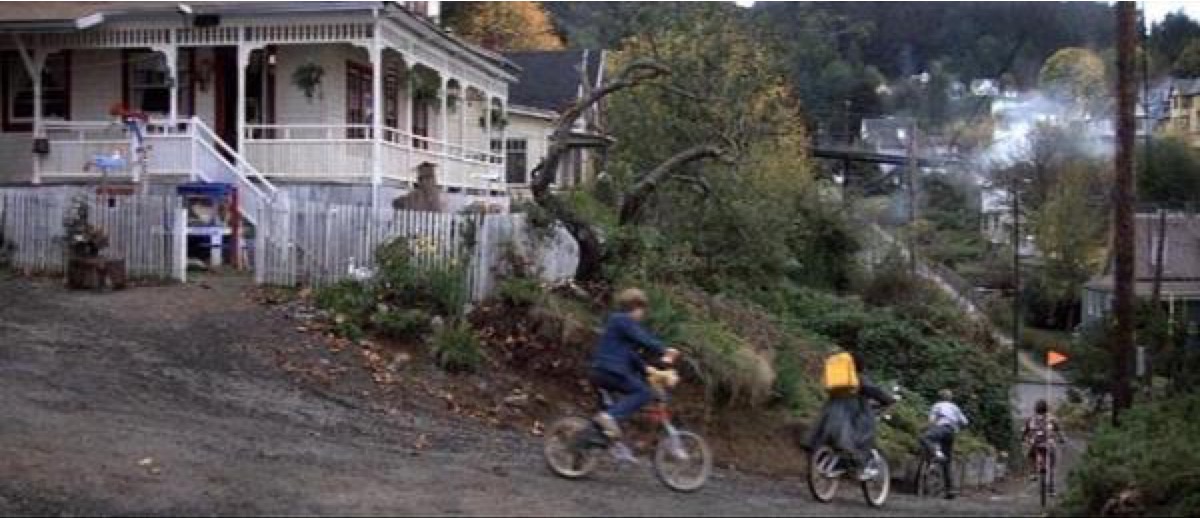The Goonies (1985) tells the story of a group of young boys who live in The Goon Docks, a neighborhood which is about to be bought out and turned into a country club. The self proclaimed Goonies must work together to decode mysterious clues and find the treasure of the notorious One Eyed Willy in order to save their beloved home from demolition.

The Goonies was part of a film industry shift. In the 80s, the way children were portrayed on screen changed. They went from solitary characters whose purpose was to represent innocence to key players in ensemble casts, telling stories of bravery and adventure. Other films within this shift include Annie (1982), Stand By Me (1986), E.T. The Extra-Terrestrial (1982),
and Flight of the Navigator (1986), among others. This shift is in large part due to Steven Spielberg and his production company Amblin Entertainment, which produced half of the films listed.
Children have always had a spot in film. In 1895, the Lumiere brothers, often credited with being the first filmmakers in history, created a home movie entitled “Baby’s Breakfast.” In the 40 second film, Auguste Lumiere and his wife, Marguerite, feed their daughter a biscuit and milk. The movie has no storyline or message, but this was the first depiction of a child on film. As movie making and storytelling progressed, children were showcased in various ways. The 1930s and 40s film star Shirley Temple delighted audiences with her tap dancing and rosy grin in a multitude of pictures. Temple was a beacon of hope for America’s future during the great
depression.
In the 60s, films such as Pollyanna and The Parent Trap depicted children as extremely innocent optimists, meant to enlighten adults. In other parts of the world, children were being portrayed in perhaps more honest ways. Films such as The Kid (1921), Bicycle Thieves (1948), and Ivan’s Childhood (1962) showcased how kids experienced and processed hardship.
Regardless of how the children were depicted, one thing remained constant. Whenever kids were in the spotlight, adults always remained nearby. In the 80s, films were born devoid of any major parent character or grown-up figures. And when they were featured, they were almost always “the bad guy” or oblivious to the important mission that the children were
embarking on.
The Goonies is definitely a movie that champions kids. The team’s imagination and friendship is what causes them to succeed. Although innocence is a theme within the film, it does away with the trope that all children are innocent and pure. Mikey, portrayed by Sean Astin, is still very much a child, and at the beginning of the movie, is the only one that believes the treasure could exist. His friend Mouth, although the same age, has lost a lot of his childhood innocence and is more grounded in reality, adopting so called “adult problems” as his own.

I first saw The Goonies when I was a teenager. I admired the ensemble and enjoyed the way that the kids were constantly talking over each other. They slurred their words and were hard to understand at times. I liked the commotion, and the accurate portrayal of how children communicate – the non eloquent nature of it all.
However, The Goonies wasn’t a part of my childhood. I talked to my great friend Piper Lynch, a big Goonies fan, about what the film meant to her child self. “My mom exposed me to most 80s movies in my childhood, when I started becoming curious in her childhood,” she said. “I think I wanted to live her life a little bit. We watched a lot of them together and so there’s a really nostalgic special association I have with them for that reason. I still love The Goonies and we still watch it together, and it’s sort of a cliche, but in general watching those kinds of movies definitely incites a feeling of youth and excitement of sneaking around with your friends when you’re a kid.”
The Goonies will be shown at the Byrd Theatre on August 10, 2019 at 10 am.